In what has otherwise been a uniquely dreary year, gaming has been elevated as a pastime both culturally and in our personal lives. Not having a commute now, the couple of extra hours a day really add up. I needed it too since, after the slow first six months, but at least it included Sakura Wars, Final Fantasy VII Remake, and some others. But seriously, the second half of 2020 felt positively overwhelming. Especially with the PlayStation 5‘s strong launch lineup and experiencing Xbox Game Pass for the first time with the Xbox Series X. There are more than a few AAA titles I completed and thought were good but nonetheless had to cut to make room for those closest to my heart, ones I may not even have played in a normal year.
10. Yes, Your Grace
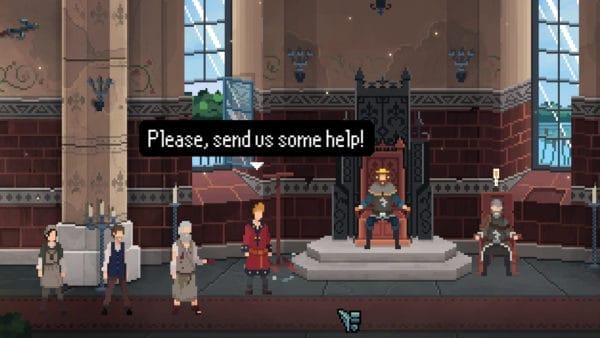
At first glance, Yes Your Grace looks like an old point and click adventure game. It’s rendered in a throwback pixel art style. You mostly play it by clicking where you want to move or to interact with something. You’ll make decisions that affect how the story branches. Occasionally, it will even throw you a murder mystery with a few small puzzles. However, at its core, Yes Your Grace is a resource management simulator. You are King Eryk, ruler of a smallish medieval monarchy, and thus spend most of your time consulting with your advisor, hearing the requests of your subjects, and trying to prepare for a looming war.
Folks might ask you to lift the curse off their village, replace food stolen by bandits, or engage in a lucrative but morally ambiguous business venture (definitely do this, you need the gold badly!). Fulfilling requests either costs gold, supplies, or the precious time of your agents (who could always benefit you elsewhere.) Conversely, denying requests also costs you one of your most important resources: the goodwill of the people.
Yes Your Grace is a game about making measured, forward-thinking decisions, but there are no ideal outcomes. Like King Lear, Eryk regrettably fathered only daughters, who are none too thrilled about the prospect of being married off to his potential allies. There are battles too, fought by properly spending the war supplies saved over the preceding period. With every tough decision, your emotional investment in the well-being of the kingdom and the royal family deepens. Thus, making later tragic story beats hit all the harder. Playing Yes Your Grace feels like you’re zeroing in on the fortunes of a couple of royal generations in a single playthrough of Crusader Kings. While the underlying principles are the same, except a lot more personal and affecting.
9. Cyberpunk 2077
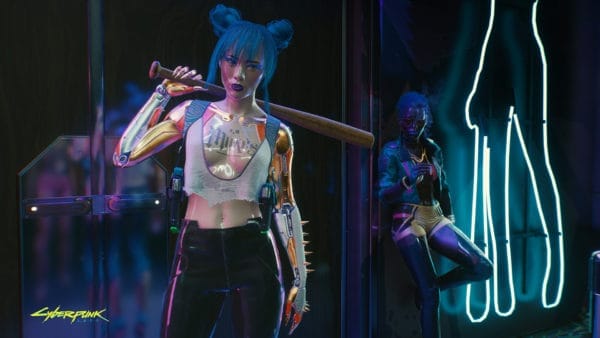
I realize putting Cyberpunk 2077 on this list at all is an act of privilege. Playing it on the Xbox Series X, the problems that continue to plague the current generation versions of the game are reduced to occasional nuisances. And while it still doesn’t feel great, the combat is at least fluid. Experiences always differ, but in this case, they do doubly so. Years of controversy and delays meant that I came to Cyberpunk 2077 with tempered expectations, roughly met. It isn’t world-changing, it also doesn’t move the CRPG forward in a meaningful way. It’s not our savior, but merely a pretty good story about a mercenary who gets an AI construct stuck in their brain and has to vamoose to get it out—the kind you’d get out of an old adventure book from the pen and paper Cyberpunk 2020.
Though the relationship starts unpleasantly, over time I came to enjoy the dynamic between V, the protagonist, and Johnny Silverhand, the dead rockerboy slowly taking over his or her brain. The most affecting substory for me was the relationship with Lucy (the love interest if you go the lesbian route) and her attempts to wrest control of her cyberbrothel from the Yakuza.
Unfortunately, the bulk of the content isn’t as strong. If you’re expecting the lofty heights of The Witcher 3’s side quests, with their complex morality and multiple nuanced solutions, you’ll be sorely disappointed. Most side quests in Cyberpunk 2077 are very generic, they wouldn’t feel out of place in one of Ubisoft’s games, and your quest log doesn’t give you much indication of what is important and what is filler. What hooked me most of all is the setting. Even in squalor, Night City is a gorgeous place to inhabit and I’m looking forward to returning to it for another playthrough once it is properly finished in 2021.
8. Sakura Wars (Shin Sakura Taisen)

I’m pretty sure I am the precise target audience for the new Sakura Wars, SEGA’s action-oriented reboot of their long-running strategy RPG dating game franchise. I love the old anime series, have long collected the soundtracks by Kohei Tanaka, and even though I have fond memories of Sakura Wars: So Long, My Love on the PlayStation 2, I’m not particularly married to its traditional combat. I was fine changing to Third-Person action. Despite what you may have heard, the actiony bits of new Sakura Wars are enjoyable enough. You and your steam-powered mech punch and shoot your way through what is literally a series of combat arenas because one major storyline involves an international competition between combat units.
Eventually, when the Imperial Combat Revue‘s Flower Division must deal with a real demonic invasion, the game briefly opens up with a couple of impressive set pieces before ending on a cliffhanger just as things are getting really good.
Thankfully, the other important half of what makes a Sakura Wars game remains intact in this iteration. Meaning that, when our intrepid heroines aren’t battling, they’re putting on musical stage shows and falling in love with the player character. As a harem dating sim Sakura Wars shines, with a lovable cast of characters to get to know better, each with their own desires, hang ups, and catchy theme songs.
I found myself invested in the relationships and conflicted about whom to pursue. Sure, Hatsuho is a spunky firebrand with the best theme song, but Azami is a hilarious tiny ninja, and Clarissa is just so good-hearted and earnest in her love of literature. How can one possibly choose?
7. Astro’s Playroom

In the run-up to the PlayStation 5, I already knew I’d do everything in my power to get one. I didn’t feel the need to read much about its innovations. I’d heard chatter about the DualSense’s improved haptics, but I still didn’t expect to prefer it over the Xbox Elite Controller. Although, I didn’t know to be excited for Astro’s Playroom either and likely wouldn’t have played it if it weren’t a freebie.
As soon as I put my hands on the game, my brain exploded. I could feel each step in the sand underneath my feet. I could feel the rain drizzling on my umbrella and the wind-up and release of my bow. Astro’s Playroom is essentially the Wii Sports of this generation, the pack-in proof of concept to provide the blueprint for how every next-gen game could and should implement haptics. But, as I played on, I realized it’s much more than that.
It’s also a delightful 3D platformer, meatier than one would expect and filled to the brim with mini-games and collectibles. Some of these mini-games go on for too long, but all of them demonstrate just how much verisimilitude the DualSense can add to our interactions. Meanwhile, the collectibles tie into the game’s third and final purpose: that of a museum of Sony Computer Entertainment products over the generations, rendered near photo-realistically for you to admire while you reflect on glory days past. It’s a love letter to all things Sony and, at almost every turn, you will encounter some surprising detail in the world, some hidden reference to a Sony game you love hidden away in the background, and you’ll smile knowingly to yourself.
6. Star Wars: Squadrons

If you went back to talk to me in the mid-90s and asked me “What’s the best game?” teenage me would tell you, without hesitation, Star Wars: TIE-Fighter. For all I know, teenage me is still right. I haven’t seriously played it in over two decades, but my nostalgia remains strong. Star Wars Squadrons plays on this nostalgia like a fiddle. Most of the concepts and mechanics you will encounter in it are faithfully adapted from LucasArts’ beloved series of PC space sims.
Whether you’re scanning ships, targeting and disabling sub-systems, intercepting torpedos, redistributing your shield energy, giving commands to your wingmen, or managing your energy between shields, lasers, and engine, it’s impressive how well a console controller can handle what used to take up a full keyboard and joystick. It’s even better with the Thrustmaster T-Flight Hotas One, which I’m happy to have another excuse to use after buying it last year on a NewEgg sale to play Ace Combat 7: Skies Unknown.
I am told that with PlayStation VR, Squadrons is an even better experience; easy to believe considering how much I enjoy looking at its lovingly rendered ships and interiors. Of course, I would have liked a more substantial single player experience, just as it would be nice to have longer competitive campaigns like X-Wing vs. Tie Fighter used to have. However, considering the $40 budget price tag and free DLC it’s hard to argue with the content provided.
5. Persona 5: The Royal
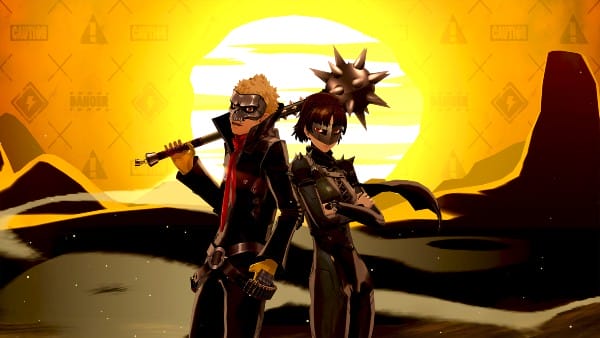
The original Persona 5 was my Game of the Year in 2017 and is, I believe, by now universally acknowledged as a great JRPG. Why then is Persona 5: The Royal, a significant quality of life improvement over the previous version, not ranked higher on this list?
Quite frankly, I have mixed feelings about the added content. I greatly enjoyed Kasumi’s character arc, but the rest of The Royal’s story felt like a reaffirmation of things that were already resolved. Not to mention, it unties some narrative ends just so they can then be tied again slightly differently. To me, it’s simply not as essential as Persona 4: The Golden was to Persona 4. Although, I realize that ironically there are detractors making similar arguments about The Golden. That said, being now allotted enough time to actually complete all of the social activities and bonds in one play-through is a literal game-changer and objectively makes this the better game. If you haven’t played Persona 5 yet, you absolutely should play Persona 5 The Royal instead of the vanilla version. For one, its Platinum trophy requires much less grind.
4. Final Fantasy VII Remake
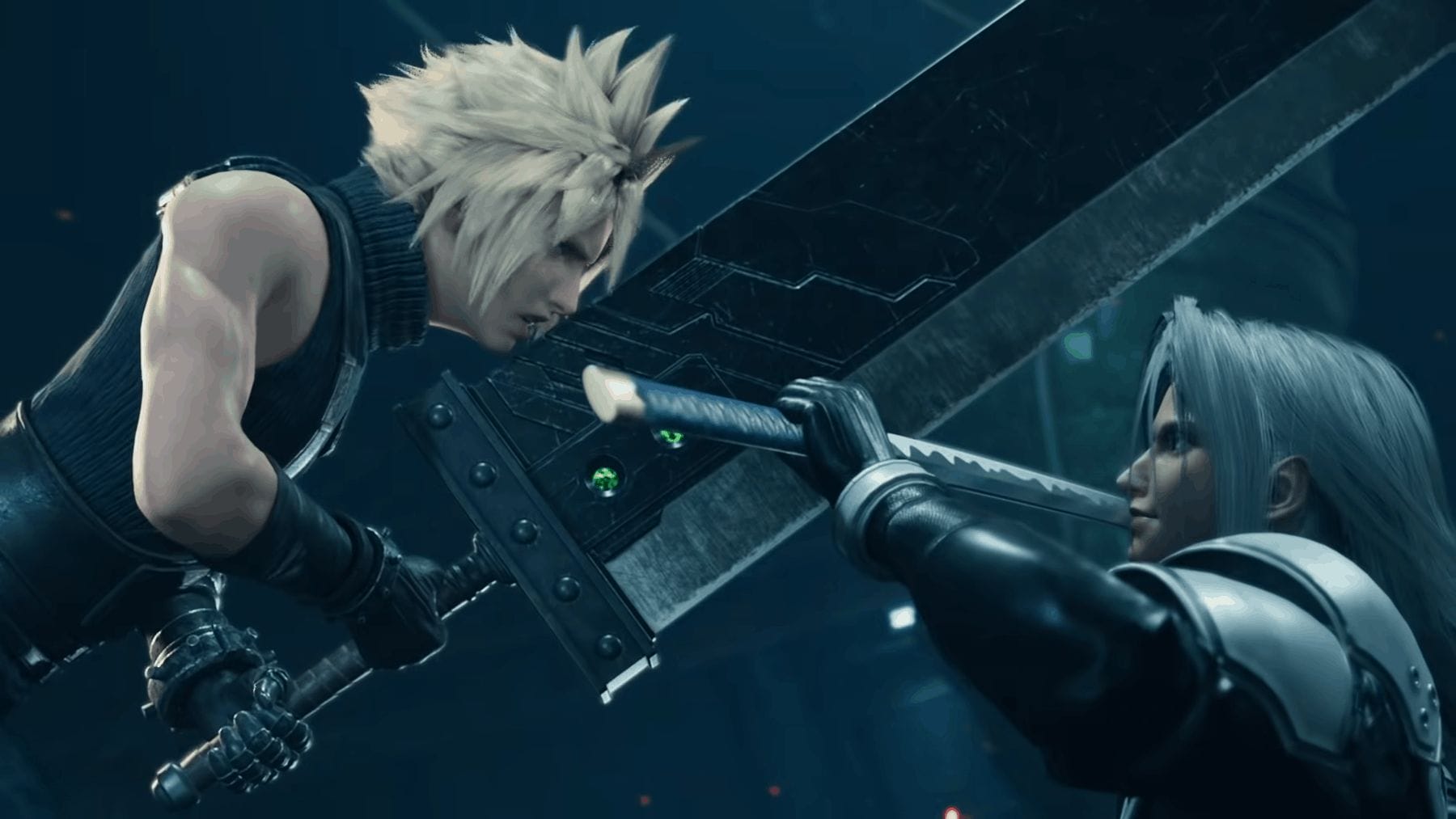
They say that good things come to those who wait, and we’ve waited a very long time for Final Fantasy VII Remake. Honestly, we’re still waiting for most of it. I played the original only once, so long ago I barely remember it. Nonetheless, it is impossible to miss how thoroughly directors Tetsuya Nomura, Naoki Hamaguchi, and Motomu Toriyama expanded upon the themes, events, and characters of the original.
Let’s take Jessie. She was so minor in Final Fantasy VII, I forgot she existed until the Remake. Now I know her for her passion for motorbikes, her mom’s delicious pizza, and her unrequited and unforgettably horny crush on Cloud. That is the magic of the Remake’s maximalist approach to adaptation: practically everything you can think of in the first quarter of the original game is in some way made deeper, more detailed, and more important. Add to that the spectacular visual upgrade, the real-time combat (an excellent refinement of Final Fantasy XV), and the most massive orchestral score this year in both size and scope (they’ve now released twelve CDs of it and it’s still not complete).
The end result of it all is a true blockbuster with wide appeal to both long-time fans and newcomers who know Final Fantasy VII by reputation alone. Alas, those newcomers will eventually be confused when they reach the tail end of the game, which twists itself into a pretzel to keep the original canon while also coexisting with a whole bunch of other related media. How much of a problem this is going to be in future parts won’t become clear until then, but I choose to remain optimistic and regard Final Fantasy VII Remake as a powerful step in a promising direction.
3. Yakuza: Like a Dragon
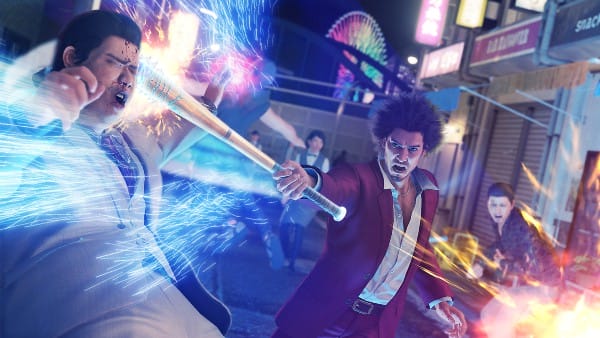
Like many long-time Yakuza fans, I was skeptical about its transition from RPG brawler to full-on Dragon Quest-style turn-based RPG. After all, Ryu Ga Gotoku Studio’s prior attempt to turn Yakuza into a zombie shooter could charitably be described as a “charismatic failure,” and initial footage of Yakuza Like a Dragon’s new battle system made it seem clunkily grafted on in a similar way.
I also thought of regular series hero Kazuma Kiryu as irreplaceable. Thankfully, I was wrong on both counts. Like a Dragon can stand proudly beside the JRPGs it idolizes. It nails the job system, the skillsets, the balancing of elemental strengths and weaknesses, and even the punny enemy names! When it isn’t doing a near-perfect Dragon Quest homage, it’s taking mechanics and menu elements straight from Persona 5 as well, which fit seamlessly into the whole. Yakuza Like a Dragon knows that when you’re borrowing, you borrow from the very best.
The same idea is used with the new protagonist, Ichiban Kasuga, he borrows liberally from Kiryu, but he’s different enough to be his own man. Kiryu was a lone wanderer, an intuitively wise man who spent most of his time reacting to external pressure. Ichiban, while as noble as Kiryu, is a highly proactive dumbass, which serves the narrative well. This time the hero isn’t quite as important anyway, because you have a party of charismatic people to accompany him. Each of them has an important part to play in the sprawling story that unfolds. It ties together Yakuza 0 and the first game too. While also dealing with the ramifications of Yakuza 6: Song of Life while cranking the manly tears to eleven. Just as I felt Yakuza was getting stale, Like a Dragon functions as an invigorating booster shot, and one of the best games in the series.
2. Demon’s Souls
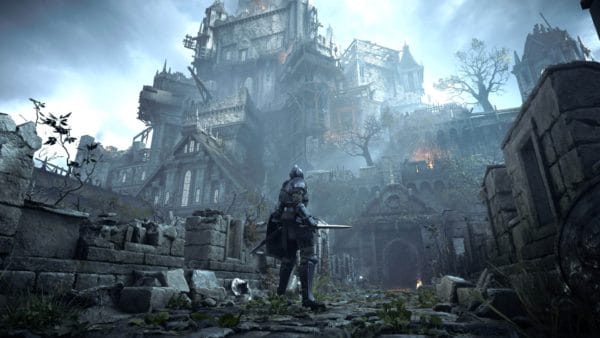
What is there to write about Demon’s Souls that hasn’t been written already? Its dungeons, from the Boletarian Gates to the Tower of Latria to the Valley of Defilement, are legendary. Not only did it birth a whole genre, but its innovations have been adapted into a great many existing ones as well. Folks have been begging for a remake or remaster for years.
Finally, our lamentations have been heard! For some, it’s not everything they wanted, and they’ve been vocal in their complaints. It’s admittedly not quite series guru Hidetaka Miyazaki’s vision: too bright, too big, too loud. Bosses that were once pathetic are now gross. The soundtrack has been arranged as epically as possible. Not every voice actor is back. I can generally relate since in other areas I am a pedant myself, but in this case, I like a lot of the changes (like the False King), and the few changes I agree are for the worse (such as the lack of organ in the False King’s musical theme) are not even close to deal-breakers for me.
Rather, I marvel at Demon’s Souls’ technical prowess: how cleanly it renders its decrepit world; how it maintains the combat feel of the original despite removing jank and more than doubling the frame-rate; how it is the first Souls game with a genuinely good character creator; how in a generation where many big games have required large patches, it was rock solid from day one. It is admittedly a unique vision, but to me, it is still Demon’s Souls, bigger and better. It’s everything I wanted, and don’t forget what happened to the man who suddenly got everything he always wanted: He died again and again happily ever after.
1. 13 Sentinels: Aegis Rim

13 Sentinels Aegis Rim is the culmination of story concepts and design ideas that originated in the mid-2000s while VanillaWare was developing Grim Grimoire, a fast-paced strategy RPG in real-time with the ability to pause to issue commands. As a result, it feels like a natural evolution of that underappreciated title. The key difference is that instead of combat taking place in VanillaWare’s trademark 2D environments, here it is mapped to an isometric cityscape. While a bit on the easy side, the tactical design is impeccable, with the different generations of Sentinels complementing each other in interesting ways.
Don’t worry though, we also still get the painterly backgrounds, dynamic light rays, and attractive VanillaWare characters we’re here for during the visual novel portions that make up two-thirds of the 30-hour runtime. Their style fits the adventure game genre like a glove, and that format is in turn ideally suited to telling 13 Sentinels’ non-linear, genre-deconstructing story. In one of the greatest scripts ever written for a video game, George Kamitani (also the lead designer of Odin Sphere and Dragon’s Crown) pays tribute to his influences, reconstituting tired tropes into a gripping mystery across space and time, the same way a master chef might use familiar ingredients to craft an altogether novel gourmet dish.
In the process, he introduces us to some of the most loveable characters of the year. 13 Sentinels Aegis Rim is tower defense without towers, point-and-click without puzzles, and giant robots vs. kaijus with no interest in depicting the spectacle inherent in that premise, yet by stripping away what you would conventionally expect from this kind of title, it becomes its own thing entirely, a timeless masterpiece.
Let Jens know what some of your favorite games of 2020 were in the comments or by reaching out to Jens or us on Twitter, or underneath the post about it on our website FB Page.
You can also hear Jens’ thoughts on his Top 10 list by listening to the Video Games 2 the MAX podcast on your favorite podcast app, Youtube, or by hitting play below…
